Dashavatar – The Many Forms of Vishnu
- October 6, 2020

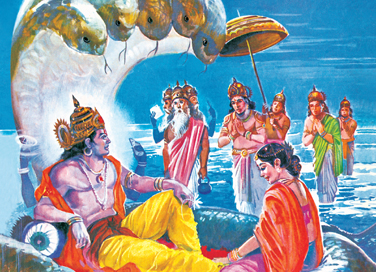
Dashavatar – The Many Forms of Vishnu
- October 6, 2020
By Komal Narwani
Vishnu, the owner of the divine Kaumodaki, is the preserver of the universe. Whenever the balance between good and evil seemed to be weighing on the wrong side, Vishnu would descend on earth to restore cosmic order. As per the Puranas, Vishnu was to appear in ten different forms known as the fabled dashavatar across the four dharmic ages of man also known as yugas. Till date, he has appeared in nine of these forms.
Matsya – The Fish
To receive more such stories in your Inbox & WhatsApp, Please share your Email and Mobile number.
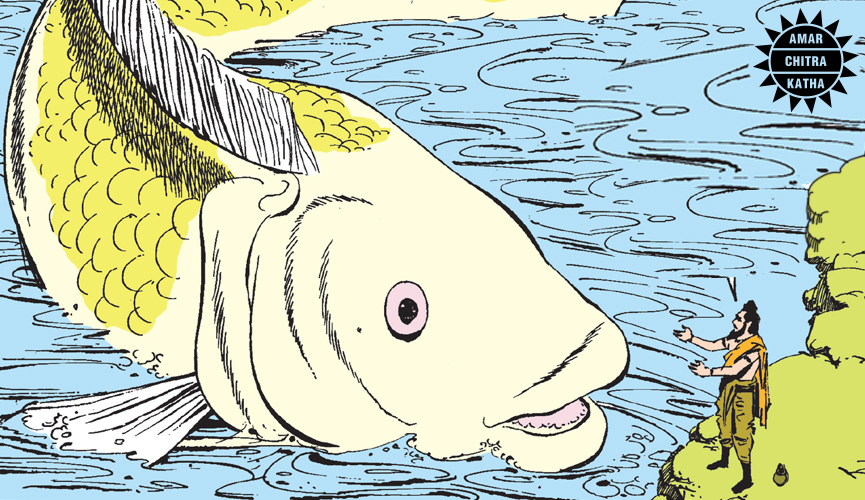
Depicted as a giant fish or as a half-human torso connected to the rear half of a fish, this was the first of Vishnu’s dashavatar. In this avatar, Vishnu had warned the first man, Vaivasvata Manu, of a great flood which would end the three worlds. He asked Vaivasvata to bring one of every plant and animal species to the shore, and on the day of the great flood, he safely took all of them to a new world in a boat and saved them.
Kurma – The Tortoise
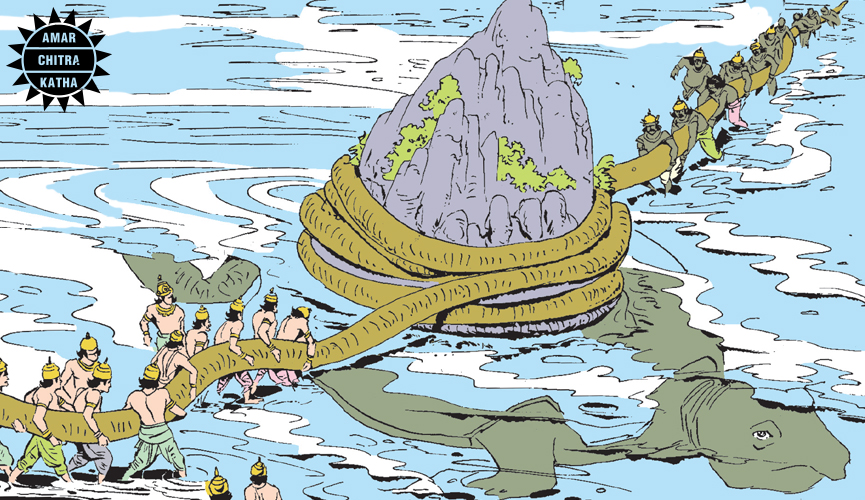
Depicted as a giant tortoise or a mixed form of human and tortoise, the Kurma avatar of Vishnu, took form during the Samudra Manthan incident in the Bhagavata Purana, where the devas and asuras started churning the ocean of milk in a bid to obtain the nectar of immortality or amrit. During the churning, Mount Mandara, which was being used as the churning rod, started to sink. Vishnu appeared in the form of the giant tortoise, taking the weight of the mountain on his back.
Varaha – The Boar
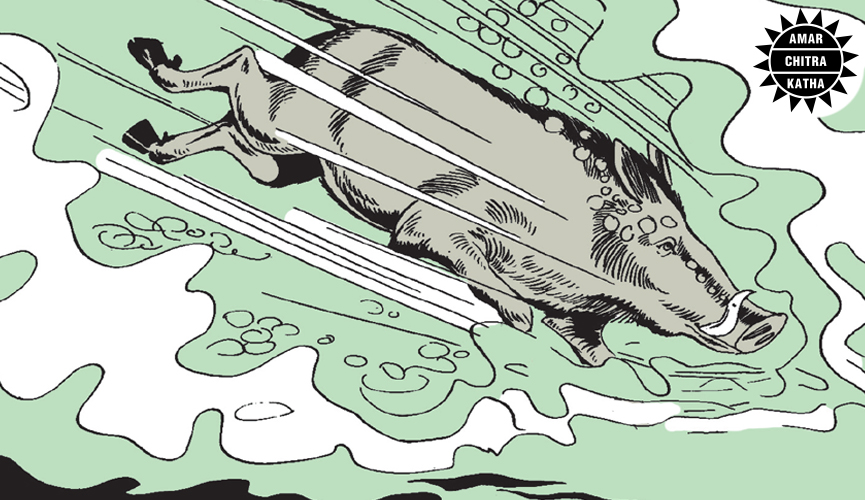
When the demon, Hiranyaksha, kidnapped the earth goddess, Bhudevi, and hid her in the cosmic ocean, signifying the end of a yuga, it was Vishnu who rescued her, taking the form of a boar. It wasn’t an easy battle; Varaha battled Hiranyaksha for a thousand years before the demon was slain. Afterwards, Vishnu went deep into the primordial waters and raised the hidden earth back to the surface with his tusks. Varaha is either depicted as a full boar or a human with a boar head.
Narasimha – The Man Lion
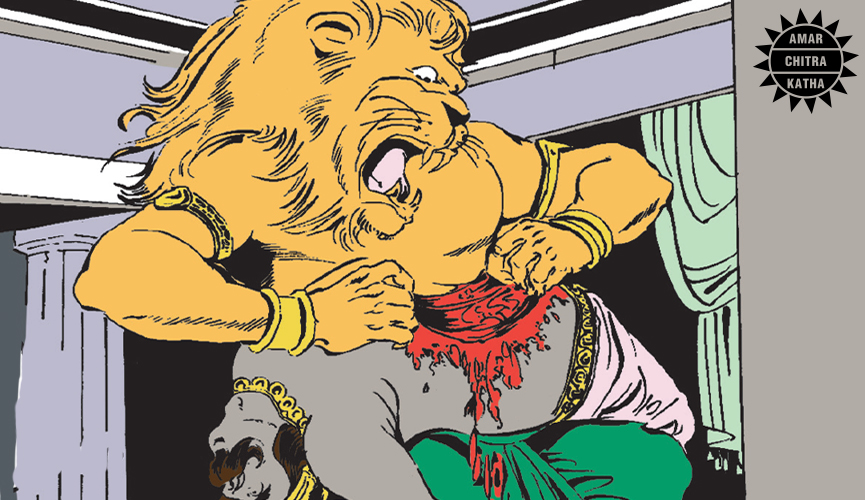
Hiraṇyakashipu wanted to take revenge for his elder brother Hiranyaksha’s death. After severe penance, Brahma appeared before him. He asked Brahma for a curious boon that rendered him near-invincible.
“Let not death come to me either by man or beast, by day or by night, with a weapon either living or inanimate, indoors or outdoors, on earth or in the sky.”
Brahma granted his wish, and soon, Hiranyakashipu started creating havoc in heaven and on earth. When he found out about his son Prahlada’s deep devotion to Vishnu, the demon king decided to kill him. To protect his devotee, Vishnu took the form of Narasimha, a human with the head and claws of a lion. Narasimha was Vishnu’s way of countering Hiranyakashipu’s boon from Brahma, killing the asura at dusk under the arch of the doorway, ripping him apart with his claws as he lay across the godly avatar’s thighs, suspended in mid-air.
Vamana – The Brahman Dwarf
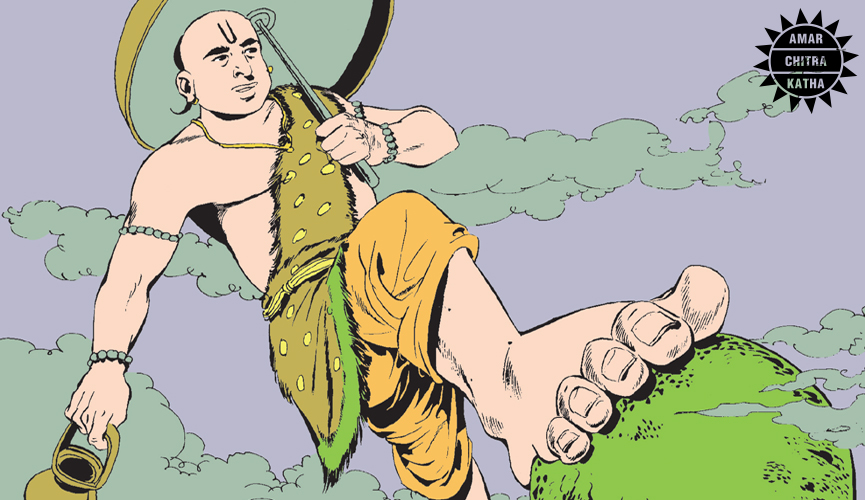
Prahlad’s grandson, Bali, was a good and just king who was a great devotee of Vishnu like his grandfather. He also temporarily possessed the nectar of immortality, making him immune to death. Near invincible, the king managed to lay siege to the heavens as well as the earth, taking over Indra’s crown. The gods called upon Vishnu for help, who did not want to be responsible for killing his own devotee. So, instead, he resorted to a less fatalistic approach, appearing in the form of Vamana, a Brahman dwarf. Bali welcomed Vamana to his court, promising to give him whatever he wanted. Vamana asked for three paces of land measured by his stride. Bali agreed and didn’t retract his offer even after being warned by his guru who could see through Vishnu’s disguise. Vamana turned into a giant and covered the earth with his first stride and heaven with the second. With nowhere to take his third stride, he mocked the king for making promises he couldn’t keep. Bali asked Vamana to step over him and complete his third stride. Pleased with this virtuous king’s sacrifice, Vamana made Bali the king of Patala, the netherworld.
Parshurama – The Warrior
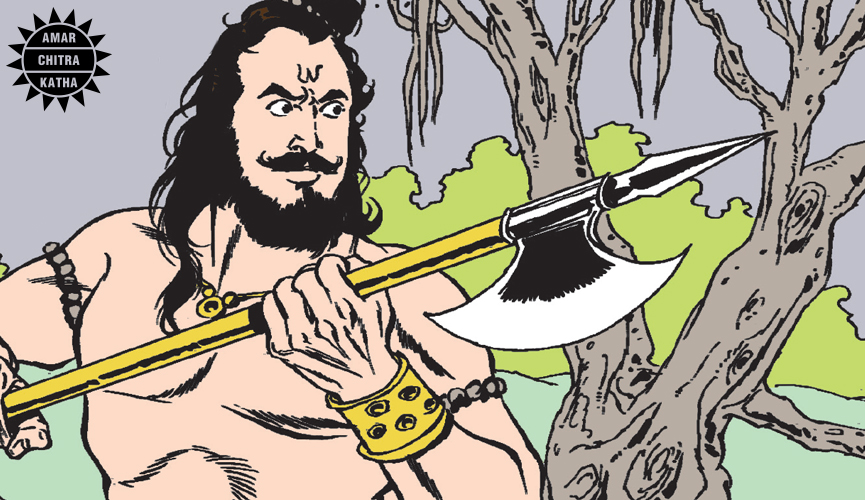
King Kartavirya Arjuna once visited the sage Jamadagni at his ashram. The saint fed the king and his army with the help of his cow Kamadhenu. The king was pleased by the cow’s yield and took the cow to his palace, against the sage’s will. Now, Jamadagni happened to be the father of Parashurama, the warrior avatar of Vishnu. When Parashurama got to know about the king’s actions, he destroyed the king’s army and killed the king. To avenge their father’s death, the sons of the king killed Jamadagni. An enraged Parashurama then vowed to kill the Kshatriya race twenty-one times over, because that was the number of times his mother had beaten her breast in grief. Parashurama kept his vow and filled five lakes with the blood of the Kshatriyas. He is considered to be one of the seven immortals mentioned in the scriptures.
Rama – The Prince
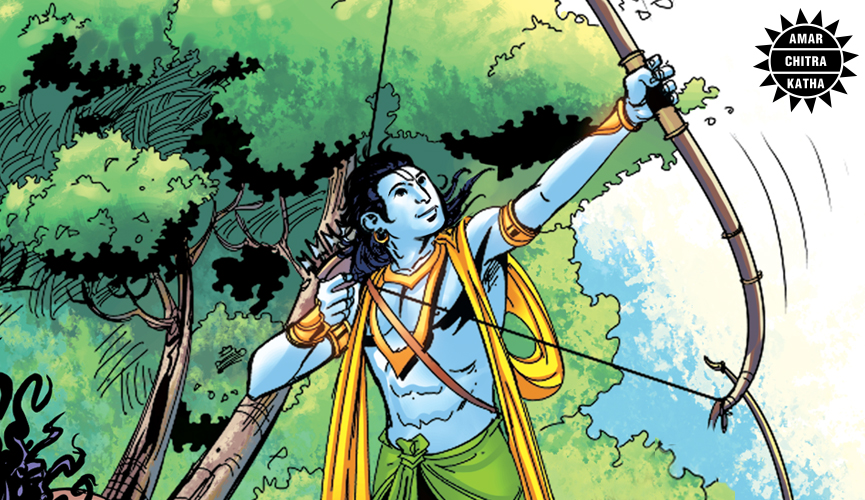
Pictured as the ideal man and the perfect human, Rama’s story is known to many. To keep his father’s honour, Prince Rama gave up his right to the throne of Ayodhya and served fourteen years of exile in the forest along with his wife, Sita, and younger brother, Lakshman. However, during their banishment, Ravana, the king of Lanka, abducts Sita, leading to one of the greatest battles between good and evil as told in the great epic, the Ramayana.
Krishna – The Cowherd
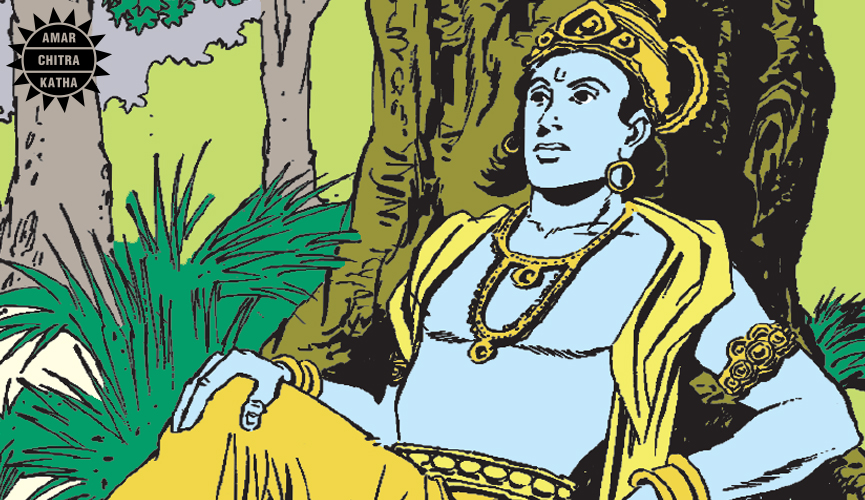
Vishnu then took on the avatar of the cowherd prince Krishna, sent to destroy the demon king, Kamsa, who was also his maternal uncle. Krishna then went on to play an essential role in the battle of Kurukshetra between the cousin clans Pandavas and Kauravas for the throne of Hastinapura, in what came to be known as the Mahabharata. It was at the battle of Kurukshetra that Krishna dictated the cornerstone of Hindu philosophy, the Bhagavad Gita, to the Pandava prince Arjuna.
Buddha – The Enlightened One
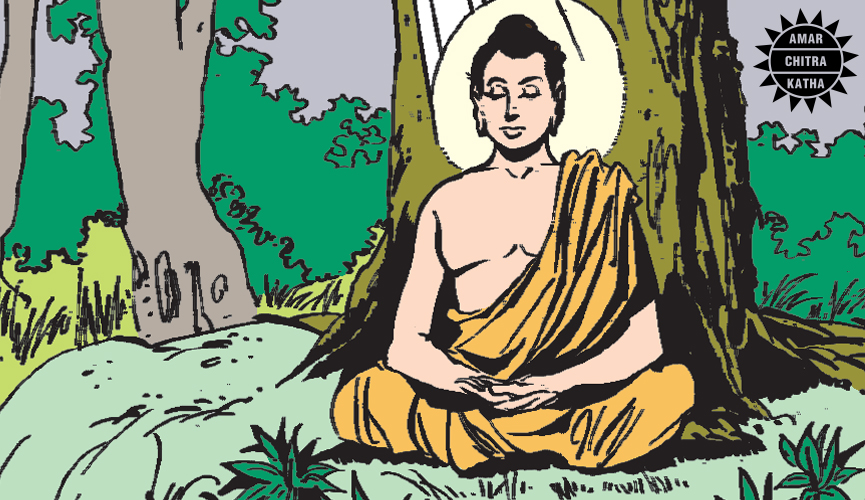
Born as Prince Siddhartha, Buddha became renowned to the world when he gave up his worldly connections to become a monk, eventually attaining enlightenment. Sacrificing the luxuries of princely life, detaching himself from worldly pleasures and practising deep meditation, he spread the message of peace. It is said Vishnu came to earth in this form to make humans see the importance of self-realization and liberation.
Kalki – The Horserider
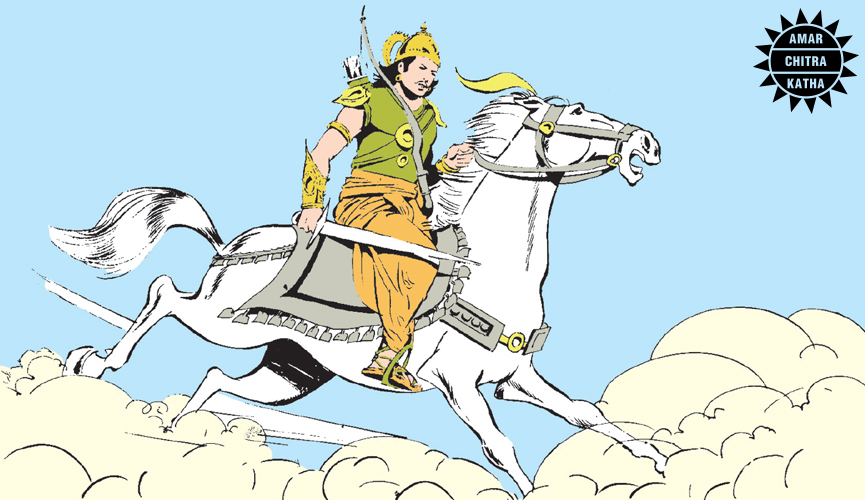
This is the form of Vishnu that is yet to appear. As per the Puranas, the tenth form of Vishnu is to be Kalki, the destroyer of darkness, who shall arrive at the end of the Kali Yuga, incidentally the cosmic age we are living in right now. Riding a white horse with a blazing sword in hand, Kalki will announce the dawn of the Satya Yuga, starting the cosmic cycle all over again.
Read more Amar Chitra Katha stories about Vishnu on the ACK Comics app, Kindle, and various major e-tailers.
To receive more such stories in your Inbox & WhatsApp, Please share your Email and Mobile number.

Comic of The Month
The Naval Journey of India Book I
This book is the first of a three-book series that takes a deep and detailed look at India's Naval History and a deep insight into the lives of our men and women in white. But any series on the Indian Navy has to start at the very beginning - exploring India's celebrated maritime history. Join our little hero, Bharat, and his grandfather, Commodore Sagar, as they sail into the deep blue waters of time. Book I of The Naval Journey of India takes a sweeping look at India's maritime endeavours, how the seas impacted us over millennia and how the oceans made us who we are.